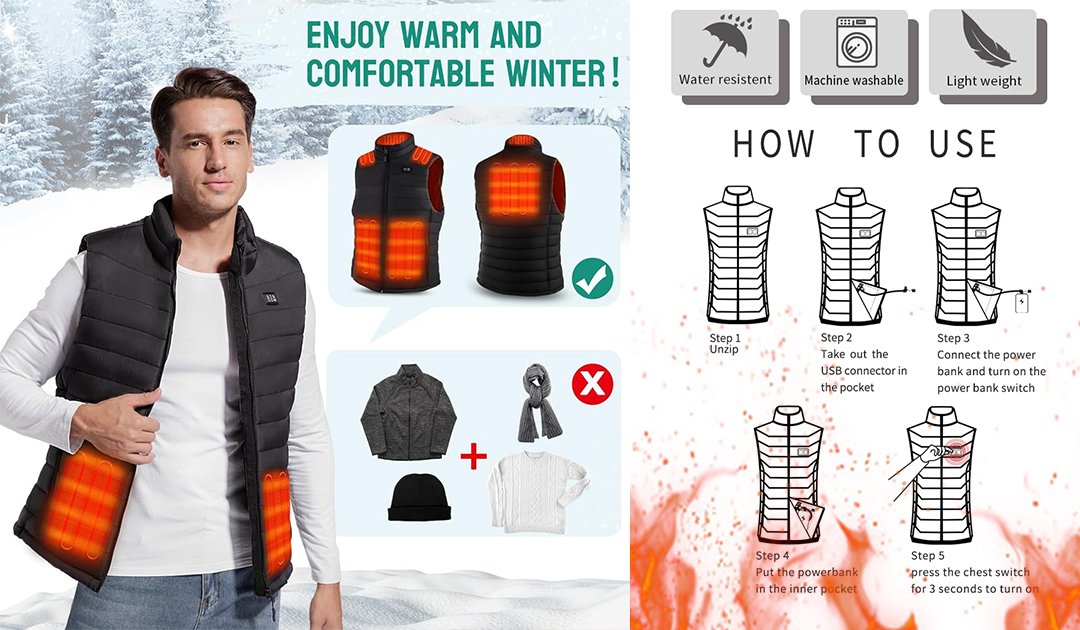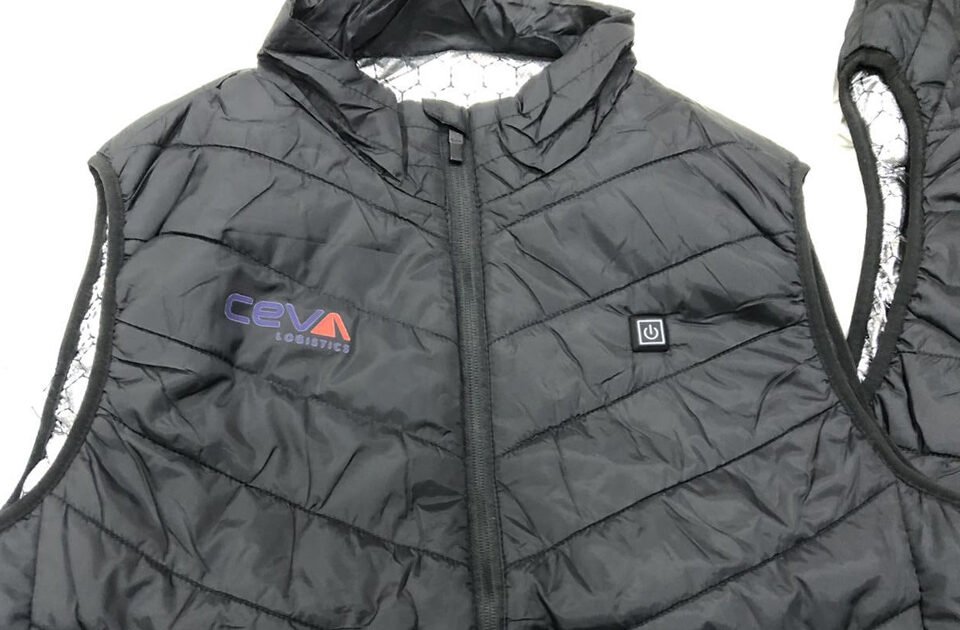The Future Trends of Heated Clothing
Introduction
Heated clothing has come a long way from being just a niche product for extreme cold weather. Today, it’s a fast-growing market with many uses, thanks to new technology and increasing demand. Understanding the latest developments and future trends in heated clothing is important for both makers and users. This blog explores these innovations and trends, highlighting new materials, applications, and the changing landscape of this exciting industry.

Latest Technological Developments
Graphene Material Applications
Graphene, a single layer of carbon atoms arranged in a hexagonal lattice, is making waves in the heated clothing industry due to its remarkable properties. It’s incredibly strong, lightweight, and an excellent conductor of heat and electricity. These characteristics make graphene an ideal material for heated clothing in two significant ways:
As an Insulating Layer: Jackets with graphene layers can provide consistent and efficient heating without being bulky, making them more comfortable and practical for users. Companies are already exploring graphene’s potential, with products that promise better performance and durability compared to traditional heating elements.
As a Heating Material: Graphene is also used as a heating element due to its rapid heating, even heat distribution, and safety features. Currently, the high cost limits its use to premium heated clothing. However, as production scales up and the cost of graphene decreases, it is expected that graphene will be used in more affordable heated garments. This will make the benefits of graphene heating technology accessible to a broader audience.
APP-Based Smart Temperature Control Systems
Smart technology has transformed heated clothing. Modern heated garments often come with APP-based temperature control systems, allowing users to adjust the heat settings through their smartphones. This not only makes it convenient but also improves the efficiency of the heating elements by adapting to the user’s needs. For instance, a user can increase the heat while sitting still in a cold environment or decrease it when being active. Feedback from users shows high satisfaction with these smart features, which offer precise control and improved comfort.

New Material Applications
Advanced Composite Materials
Heated clothing is also benefiting from new composite materials. These materials are designed to be lightweight, flexible, and very good at keeping heat. For instance, combining advanced composites with heating elements ensures that the clothing remains light and flexible while still providing excellent warmth. Additionally, the use of environmentally friendly materials is becoming more common, meeting the growing consumer demand for sustainable products.
Nanotechnology
Nanotechnology involves working with materials at a very small scale, which can enhance properties like durability, heat distribution, and moisture-wicking abilities. For example, nanotechnology can create ultra-thin heating elements that blend seamlessly into the fabric, providing uniform heat without adding bulk. This technology promises a future of even more efficient and comfortable heated garments.
New Application Scenarios
Below are four new application scenarios that represent some of the emerging uses of heated clothing. In the future, as technology advances and costs decrease, many more new scenarios will likely emerge.
Winter Stage Performances
Performers on outdoor stages in winter face unique challenges. They need to stay warm without compromising their ability to move and perform. Heated clothing designed for these scenarios must be lightweight and unobtrusive while providing adequate warmth. There are already cases where performers use heated costumes to maintain their comfort and performance quality, showing the potential for this application.
Winter Diving Suits
Diving in cold waters requires special gear to prevent hypothermia. Heated diving suits are a new application of heated clothing technology. These suits must be waterproof and capable of working under extreme conditions while ensuring the diver remains warm. Current products show promise, with suits that include advanced heating elements and materials to provide divers with the necessary warmth for extended underwater activities.

Workers in Low-Temperature Environments
Workers in places like cold storage facilities are constantly exposed to low temperatures, making heated workwear essential. Heated workwear for these scenarios includes jackets, gloves, and insoles designed to provide continuous warmth during long hours in the cold. The demand for such specialized clothing is growing as more industries recognize the benefits of keeping workers comfortable and productive in cold environments. Products like heated vests and gloves have been particularly well-received, providing essential warmth without restricting movement.

Medical and Healthcare
Heated clothing also has important uses in the medical field. For example, patients with conditions like arthritis can benefit from heated wraps and garments that provide soothing heat, helping to relieve pain and stiffness. Additionally, heated clothing can help in recovery by improving blood circulation and keeping muscles warm. This application is growing in both clinical settings and personal use, with more products available for therapeutic needs.
Pricing and Cost Trends
Cost Reduction Through Technological Advancements
As the technology behind heated clothing becomes more advanced and widespread, production costs are going down. Innovations in manufacturing processes and the development of more efficient materials have contributed to this trend. For example, mass production of graphene and improvements in nanotechnology are driving down the costs of using these materials in heated clothing.
Market Competition and Affordability
The growing competition in the heated clothing market is also making these products more affordable. More brands are entering the market, offering a range of products at different price points. This increased competition benefits consumers by providing more options and driving prices down. Comparing prices across brands shows that high-quality heated clothing is becoming accessible to more people, making it easier to find products that fit their budget without sacrificing performance.
Conclusion
The future of heated clothing looks bright, with ongoing advancements in technology and materials opening up new possibilities. From graphene-enhanced fabrics to smart temperature control systems, these innovations are making heated clothing more efficient, comfortable, and accessible. As new application scenarios emerge and production costs decrease, heated clothing will likely become a staple in both consumer and industrial markets. The industry is set for growth, offering exciting opportunities for manufacturers, retailers, and consumers alike.

FAQs
1.What is the typical production cycle for heated clothing?
The production cycle usually ranges from 4 to 6 weeks, depending on order volume and product complexity.
2.How do you ensure the quality of heated clothing?
We have a strict quality control system, monitoring every step from raw material procurement to final product shipment, and adhering to international quality standards like ISO9001.
3.Do you offer customization services for heated clothing?
Yes, we provide customization services to meet specific client requirements, including design, prototyping, and production.
4.Are there discounts for bulk orders of heated clothing?
Yes, we offer competitive pricing for bulk orders, with discounts based on order quantity.
What is your production capacity for heated clothing?
Our advanced production facilities and automated lines allow us to produce tens of thousands of units daily, ensuring we can meet large-scale order demands.




